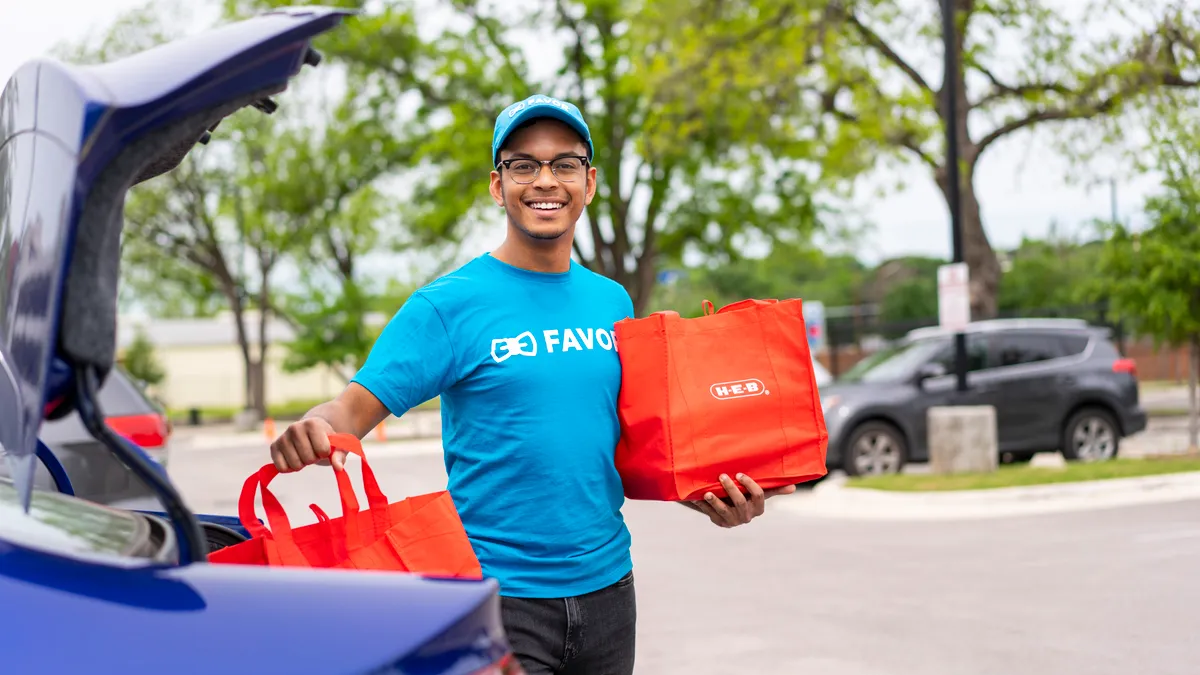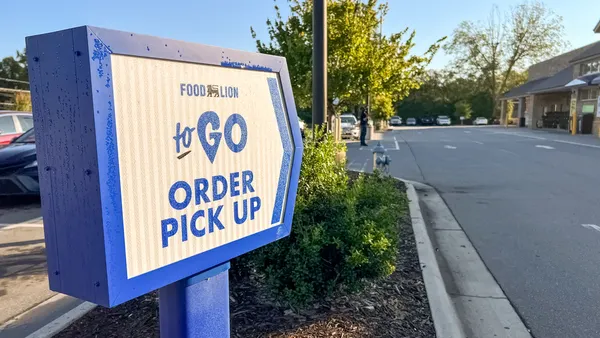Dive Brief:
- Consumers who buy groceries primarily in person place a greater weight on price compared to online shoppers, who tend to prioritize speed of delivery, according to a survey of around 1,000 shoppers commissioned by micro-fulfillment company Takeoff Technologies.
- Among those surveyed, the most common demographic of online grocery shoppers were men who are the primary shopper for their household. Households of four and of five or more members accounted for the highest percentage of online shoppers, with 68% and 71% respectively shopping at least partly online.
- Accessing a large variety of products was not viewed by most shoppers surveyed as important, nor was speed of delivery, as long as it was made same-day.
Dive Insight:
The report's analysis, which was written by Timothy Laseter, a professor at the University of Virginia Darden Business School, found that household size is a bigger factor than household income or age in explaining why consumers shop for groceries online, though price was the decider on whether consumers were willing to migrate to e-commerce.
This finding questions traditional wisdom that mostly price-insensitive, younger consumers are behind the rise in popularity of online grocery shopping.
Of those surveyed, more than two-thirds of households of four people and of five or more people ordered groceries at least partly online. A key demographic for grocers looking to bring more in-store shoppers online, therefore, is large families that are price conscious. Older millennials with children are the logical target demographic for grocery delivery, according to the Takeoff survey, but brands will also be wise to win over younger millennial consumers before they have established their households and strengthened their earning power.
Convenience and speed have typically been the main motivators for consumers deciding to shop online for groceries, reflected in Takeoff’s findings that consumers prefer delivery over curbside pickup, and that avid online shoppers hold negative views of groceries that are only delivered the following day. But many grocery providers have faced hiccups in their delivery services. According to a 2019 Capgemini Research Institute study, a majority of U.S. consumers who ordered groceries online were dissatisfied with delivery options due to additional costs, late deliveries, and the lack of a same-day delivery option.
During the pandemic, shoppers have shown a preference for pickup over delivery, according to leading grocers like Albertsons and Ahold Delhaize, mainly due to the service's flexibility and lower fees. Consulting firm Brick Meets Click found in June that 54% of online grocery sales came through pickup compared to 46% through delivery.
For grocery providers to stay competitive in the increasingly crowded field of online delivery, focus will need to be on keeping costs low and delivery speeds fast. Innovations such as autonomous vehicles, automated fulfillment and a subscription-based model to retain customers and bring down delivery fees, such as Amazon’s Prime membership and Walmart’s new subscription service, may be the path forward for delivery services caught between being able to offer low prices or same-day delivery.
Though Amazon transitioned its Prime delivery services to one-day delivery last year, Laseter suggested that participants’ overwhelming preferences for same-day delivery has made Amazon less competitive in the grocery segment compared to other areas of e-commerce. Amazon is currently building out its same-day delivery capabilities through its Fresh online and brick-and-mortar properties as well as Whole Foods stores.
Making delivery cheaper for orders above a certain spend threshold may also be an advantageous strategy for providers, given Takeoff’s findings that larger households will be more open to migrating online. Both Kroger through Instacart and Target via Shipt currently offer free delivery for orders over $35, in concerted efforts to capture the “full basket” crowd.













